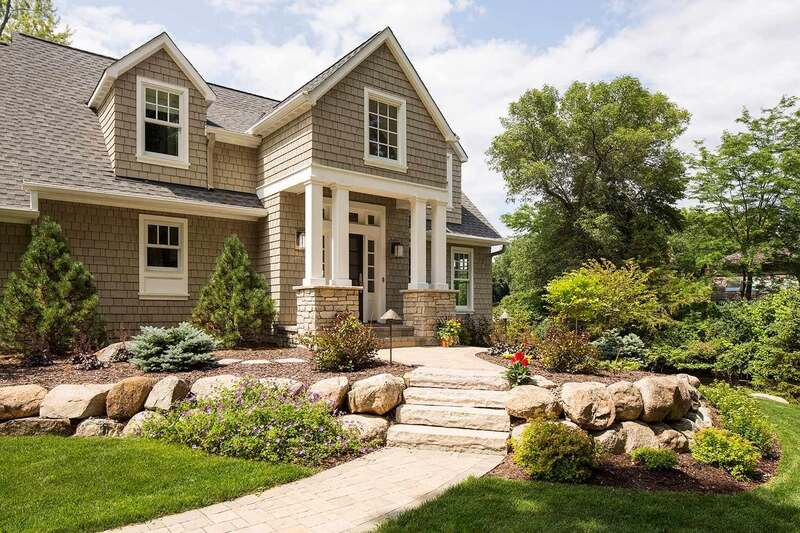The front entry walkway is the gateway to your home, setting the tone for what lies beyond the door. A well-designed walkway does more than just lead visitors, it complements your home’s architecture, enhances curb appeal, and adds a touch of personality to your outdoor space.
From choosing the right materials to exploring innovative design and landscaping ideas, crafting the perfect walkway requires thoughtful planning and creativity.
This guide offers practical advice and inspiration to help you create a stunning entryway that is both functional and aesthetically pleasing.
Choosing the Right Material for a Front Entry Walkway
The material you choose for your walkway plays a significant role in its durability, aesthetics, and functionality. From traditional stone to eco-friendly options, each material has its own advantages.
- Concrete: Durable, cost-effective, and versatile. Concrete can be poured into any shape and stamped to mimic more expensive materials like brick or stone.
- Brick: A classic choice that adds charm and character. It’s long-lasting and comes in a variety of patterns, such as herringbone or basketweave.
- Natural Stone: Luxurious and elegant, stones like slate or flagstone create a sophisticated walkway. However, they can be pricey and require professional installation.
- Gravel: Affordable and easy to install, gravel walkways are ideal for casual or rustic settings. They’re also great for drainage.
- Reclaimed Materials: Eco-friendly options like repurposed bricks, wood, or tiles add unique textures and stories to your walkway.
Design Ideas for Front Entry Walkway
1. Straight Front Walkway
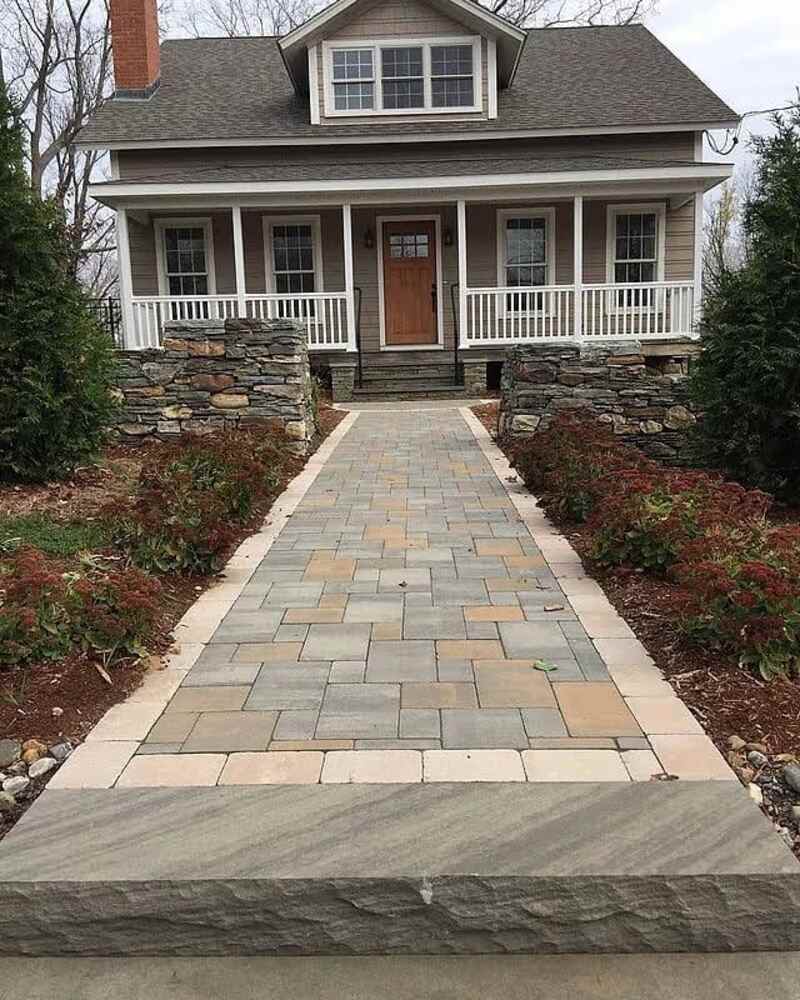
A straight front walkway design creates a clean, symmetrical look that enhances the entrance to your home. It’s ideal for homes with a modern or traditional architectural style.
This type of walkway offers a direct path, leading visitors from the street to your front door without distractions. The simplicity of a straight line can make your home feel more welcoming and organized.
To create a visually appealing straight walkway, choose materials that complement your home’s exterior. Pavers, bricks, or natural stone can add texture and contrast, making the path stand out. You can also line the walkway with low-maintenance plants or lanterns for an extra touch of elegance.
Tip: Keep the width of your walkway proportionate to the size of your home to maintain balance. Add subtle curves or gentle transitions at the end to avoid too much harshness.
2. Curved Front Walkway
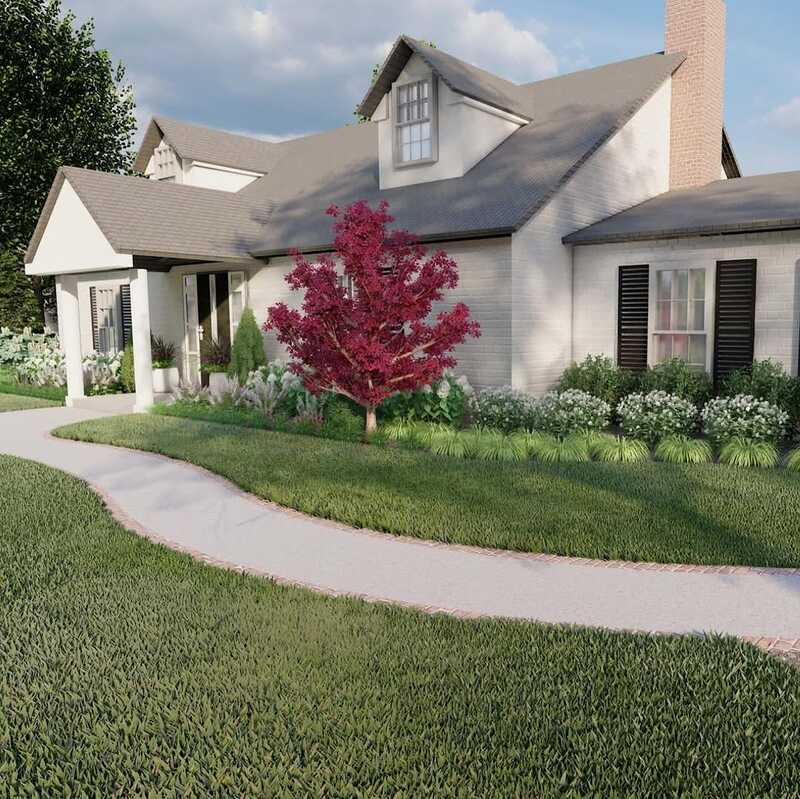
Curved pathways bring a sense of elegance and fluidity to a front yard, making them visually pleasing and functional. They guide visitors naturally, leading their eyes and steps through beautifully landscaped gardens or around key focal points like trees and water features.
Cobblestones or bricks make excellent edging materials to define the curves and prevent encroachment by grass or soil.
Designing and installing curved pathways can be more time-intensive and costly compared to straight paths. Precision is needed to ensure smooth, symmetrical curves, which might require professional assistance.
Tip: Use a garden hose or rope to map out the curve before committing to construction. This allows adjustments to ensure the pathway complements your yard’s layout perfectly.
3. Circular and Radiating Front Walkway
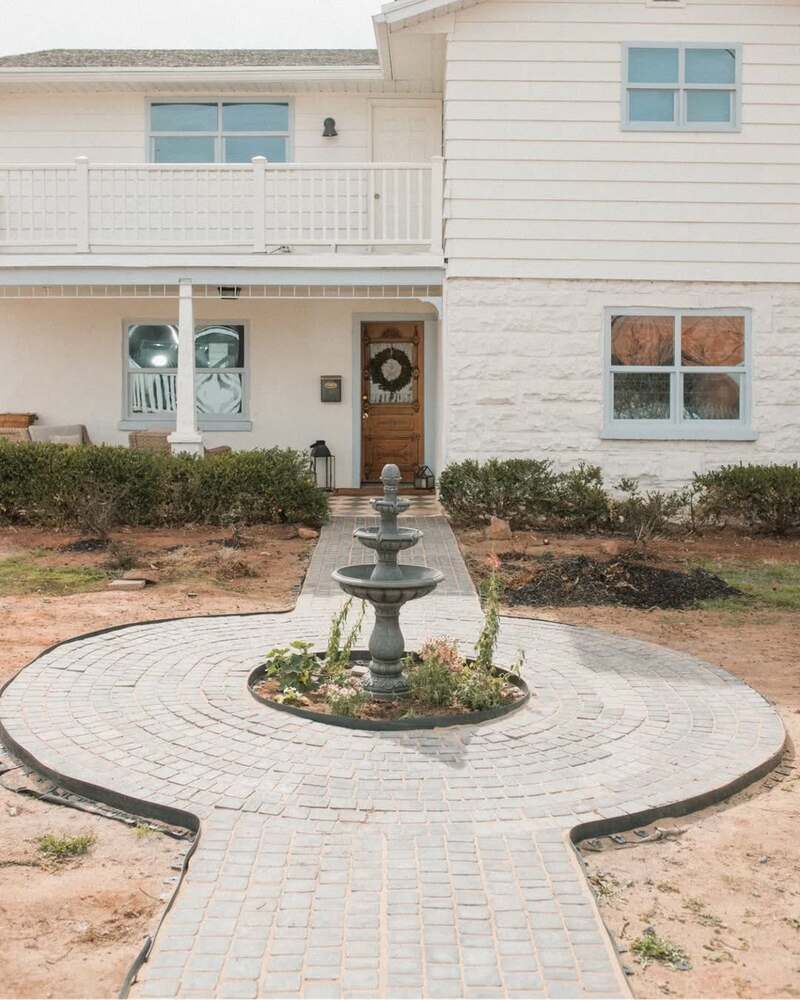
Circular and radiating walkways are a striking way to design paths that draw the eye and create visual interest. The circular design often serves as a central feature, with paths extending outward in a fan-like, radiating pattern.
This design works well in gardens, courtyards, and large front yards, where you want to highlight specific focal points, such as a statue, water feature, or a tree.
The circular shape can make a space feel more dynamic, providing multiple directions for movement while maintaining an open and inviting atmosphere. Radiating paths can lead visitors toward various areas of your property, offering both function and beauty.
To enhance the effect, consider using materials that differentiate each radiating path or add texture contrasts, such as stone for the circle and gravel for the radiating lines.
Tip: Ensure that the center of the circle aligns with a key element in your yard, such as a garden feature, to create a harmonious focal point.
4. L-Shaped and T-Shaped Walkways
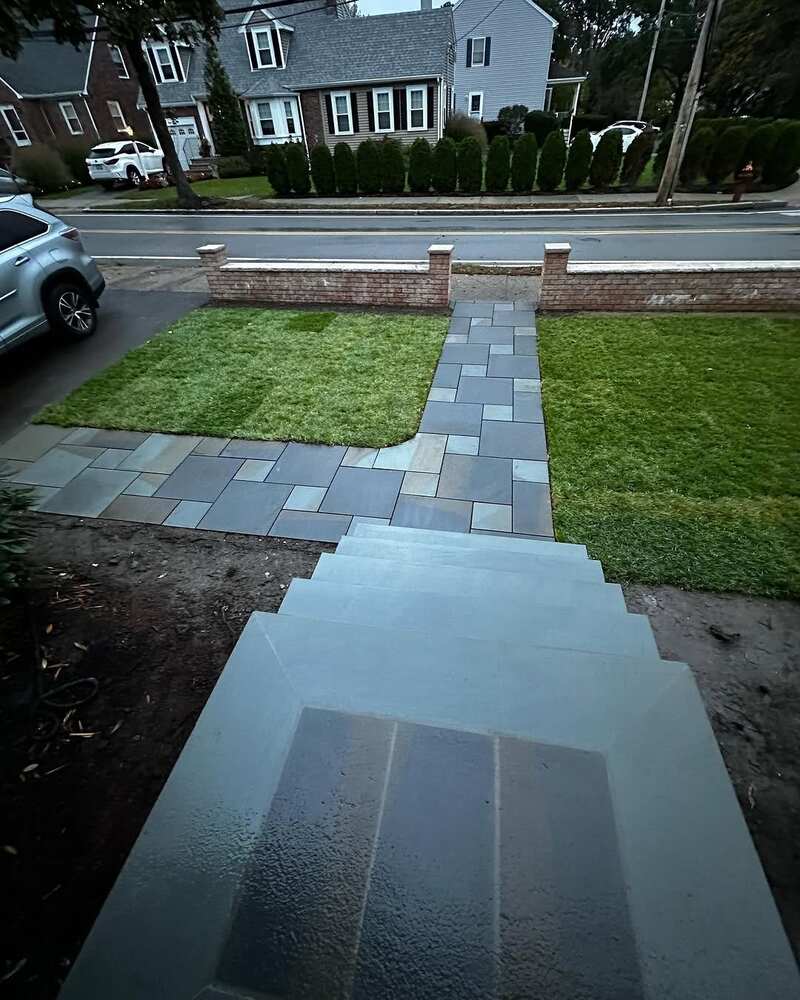
L-shaped and T-shaped walkways are practical yet stylish designs that work well for both smaller and larger landscapes.
An L-shaped walkway features two straight segments that meet at a 90-degree angle, creating a corner. This design is perfect for guiding visitors around a garden bed, around a house, or into different areas of your yard.
A T-shaped walkway, on the other hand, has a central path that branches into two directions, forming a “T.” It’s ideal for properties with larger front yards, offering a balanced and organized look. The T-shape can lead to different entrances or sections of your property, providing both functionality and flow.
Both designs allow for creative landscaping around the edges, such as planting beds or decorative lighting.
Tip: To maintain flow, keep the angles smooth and avoid sharp corners. Adding plants or small trees along the walkway can soften the transition between segments and create a more inviting atmosphere.
Inexpensive Front Walkway Ideas
5. DIY Gravel Walkway
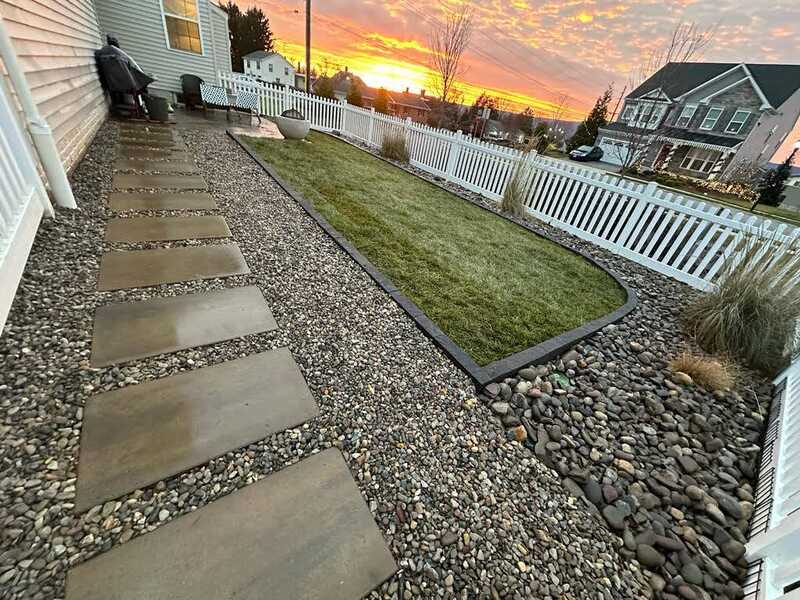
Gravel is an affordable, versatile option for front walkways. It’s easy to install and adapts well to various landscapes, whether casual or formal. With proper edging, gravel stays in place and offers excellent drainage, making it a practical choice for all climates.
Loose gravel may shift over time, requiring occasional leveling. It can also be less comfortable to walk on, especially for those in heels or with mobility issues.
Tip: Lay a weed barrier beneath the gravel to prevent unwanted growth. Add edging stones or wooden borders to keep the gravel contained and maintain a neat appearance.
6. Reclaimed Material for Walkway
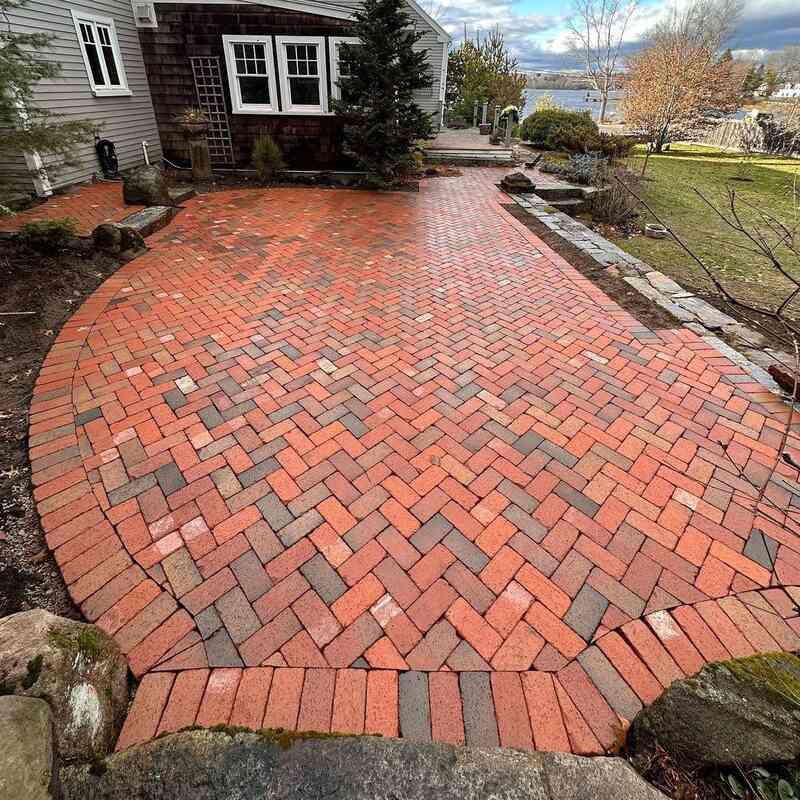
Repurposing materials such as bricks, tiles, or wood from previous projects offers a sustainable and cost-effective solution for walkways. These materials bring unique textures and a sense of history to your design, making your walkway truly one-of-a-kind.
Finding enough uniform materials can be challenging, and reclaimed items may require additional cleaning or preparation.
Tip: Combine reclaimed materials with newer ones to ensure durability. For example, use vintage bricks as accents within a concrete base to balance charm and stability.
7. Mulch Walkways
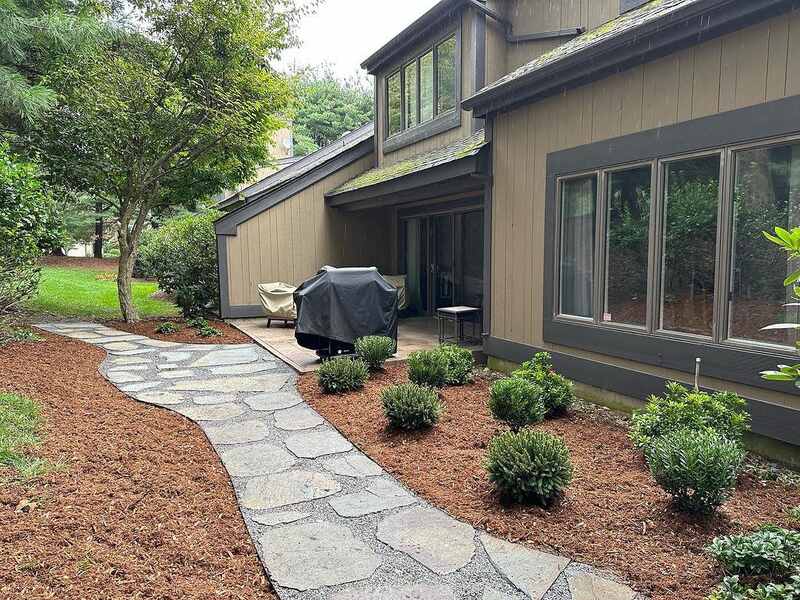
Mulch walkways blend seamlessly with natural landscapes, offering a soft and eco-friendly solution. They’re easy to install and work well in garden-centric designs, particularly in shaded areas where grass struggles to grow.
Mulch requires frequent replacement as it breaks down over time. It’s also not ideal for high-traffic areas, as it can shift or compact.
Tip: Use durable edging materials like stone or metal to keep the mulch contained. Opt for bark mulch, which is denser and lasts longer than wood chips.
8. Pallet Walkways
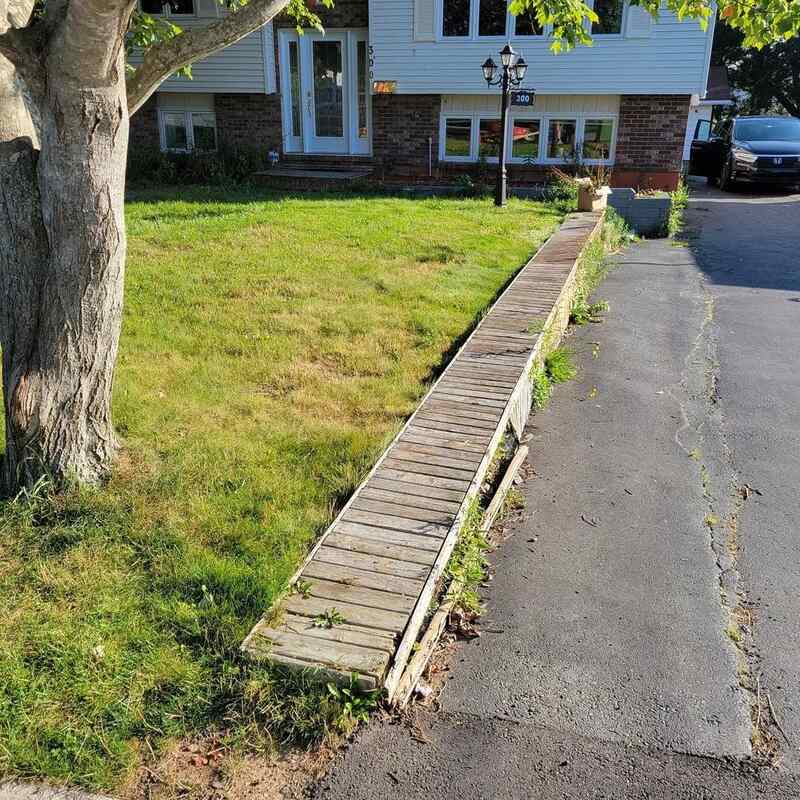
Upcycled pallets provide a rustic and creative walkway solution. When arranged closely and treated properly, pallet slats offer a stable and visually appealing surface. This approach is budget-friendly and aligns with eco-conscious design trends.
Untreated wood may rot quickly, especially in damp conditions. The surface can also become slippery when wet.
Tip: Apply a weather-resistant sealant to prolong the life of the wood. Add anti-slip strips for safety, especially in areas prone to rain or frost.
Landscaping Ideas for Your Front Walkway
9. Bordering Plants
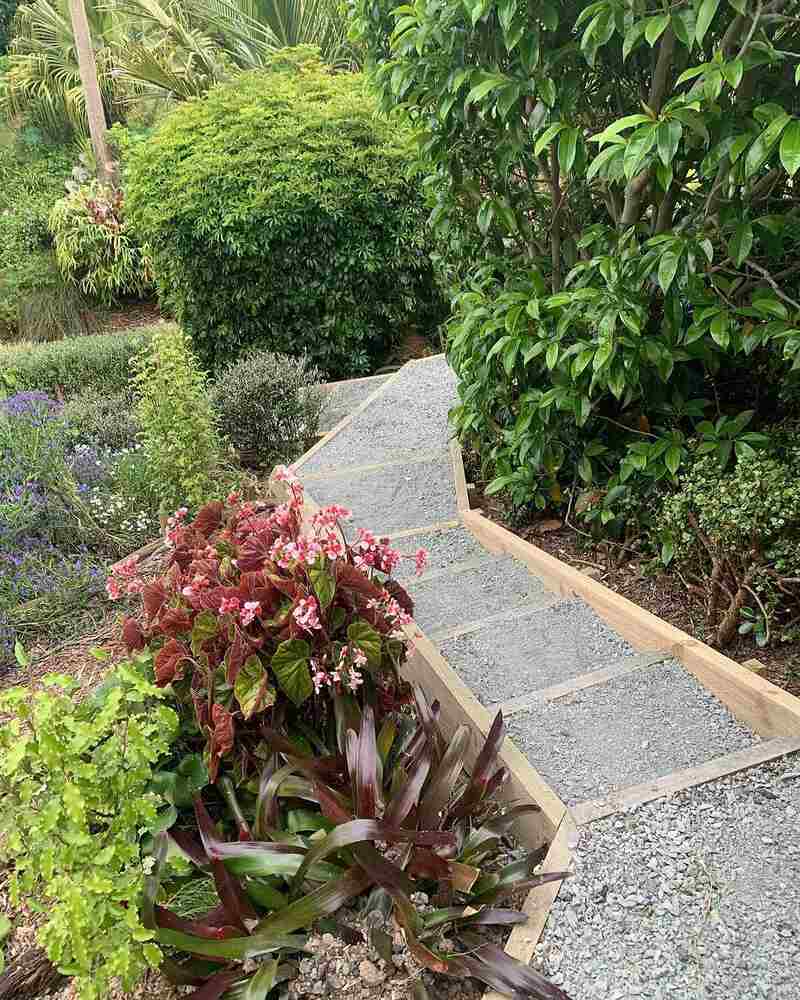
Framing your walkway with colorful flowers, shrubs, or ornamental grasses creates a natural and inviting look. Border plants soften the edges of the path and enhance its visual appeal. Choosing plants that bloom at different times of the year ensures year-round interest.
High-maintenance plants can require frequent watering and pruning, increasing upkeep.
Tip: Opt for low-maintenance varieties like lavender, hostas, or sedums. Plant in layers, with taller plants at the back and shorter ones near the path, to create depth.
10. Decorating Rocks
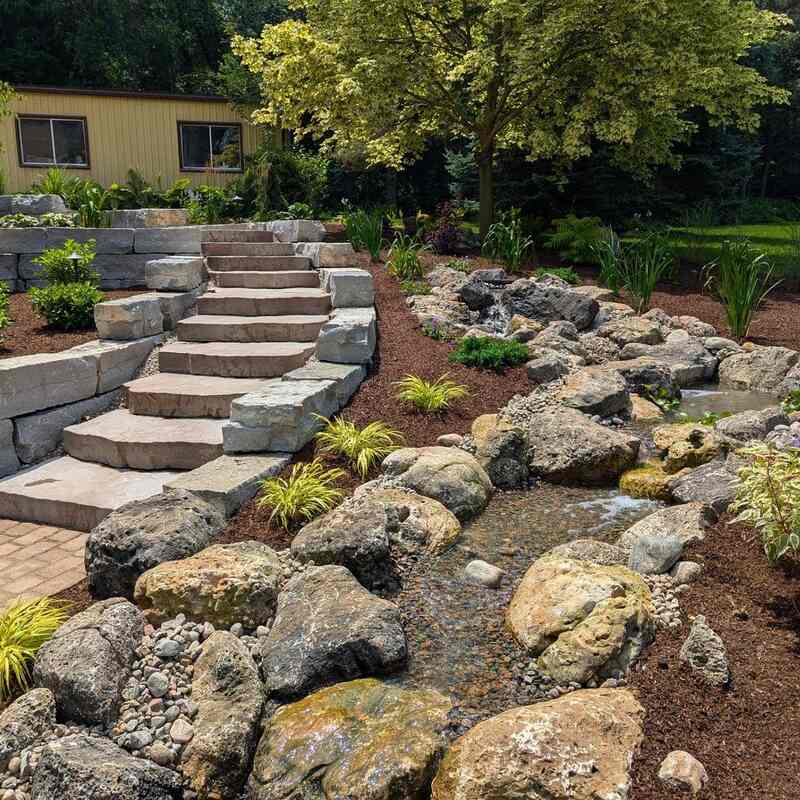
Decorative rocks or pebbles along the edges of your walkway add texture and a polished finish. Larger stones can serve as focal points, while smaller pebbles act as filler for gaps or spaces between stepping stones.
Rocks can shift or scatter over time, creating potential tripping hazards. Regular adjustments may be necessary to keep them in place.
Tip: Secure larger rocks with landscape adhesive and use a weed barrier beneath smaller pebbles to minimize maintenance.
11. Vertical Landscaping
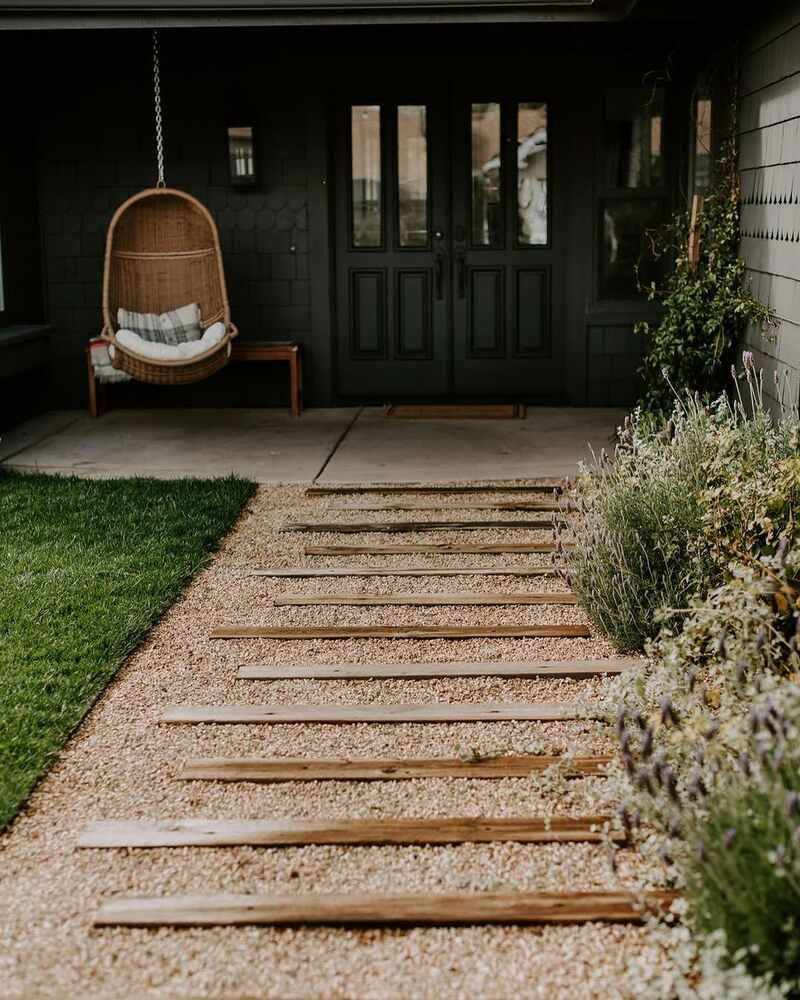
Vertical features like trellises, garden arches, or hanging planters add height and drama to your walkway. These elements make the space feel larger and more dynamic, especially in compact yards. Climbing plants like roses, ivy, or jasmine can enhance the aesthetic appeal.
Climbing plants may require regular trimming to prevent overgrowth, and some vertical structures can be costly.
Tip: Choose lightweight, weather-resistant materials for vertical elements. Position them strategically to avoid blocking sunlight or views.
12. Seating Areas
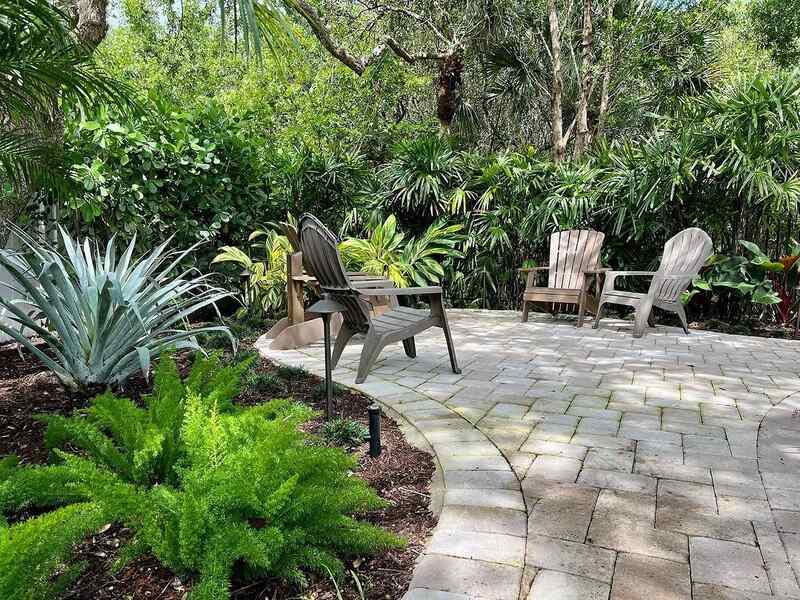
A seating area near your walkway offers a welcoming and functional touch. A small bench or chair provides a space for relaxation and adds character to the overall design. Placing seating amid greenery enhances the sense of serenity.
Here, Outdoor furniture requires maintenance to prevent wear from weather exposure.
Tip: Use weather-resistant materials like wrought iron, teak, or aluminum for longevity. Position seating slightly off the main path to maintain unobstructed movement.
13. Walkway Lighting
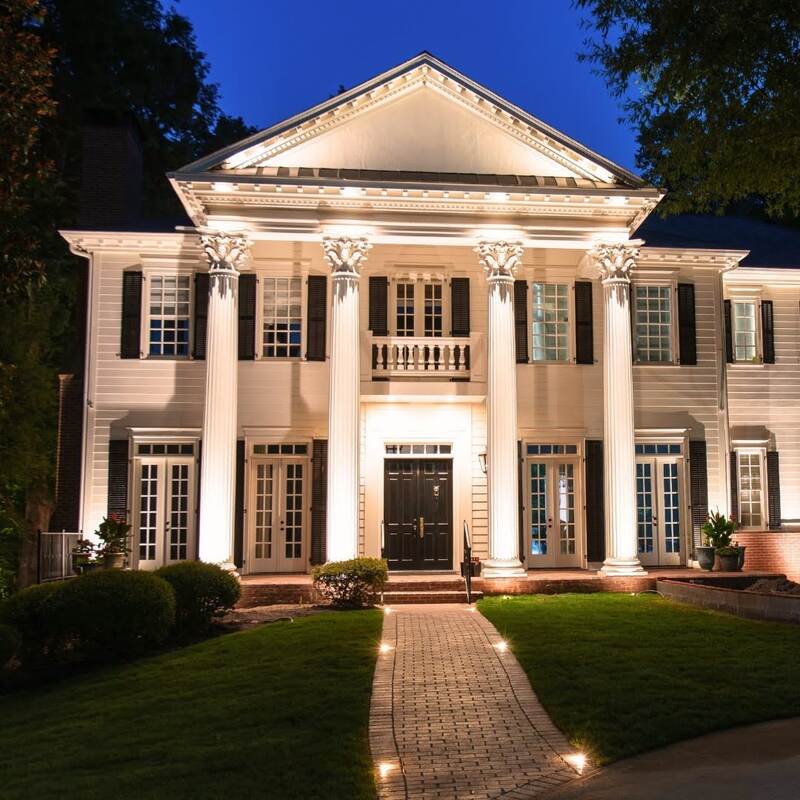
Incorporating lighting into your walkway design serves both practical and aesthetic purposes. Solar-powered lights or LED fixtures placed strategically along the pathway enhance visibility and safety after dark while adding a magical glow that highlights landscaping features. Accent lighting can also focus on specific details like a garden bed or a fountain for added charm.
Improperly placed lighting can cause glare or obstruct walkways. Additionally, solar-powered lights may not be as reliable in shaded areas or during cloudy weather.
Tip: Opt for weather-resistant lighting fixtures and install them at ground level to minimize glare. For consistent brightness, choose low-voltage LED lights, which are energy-efficient and durable.
14. Water Features
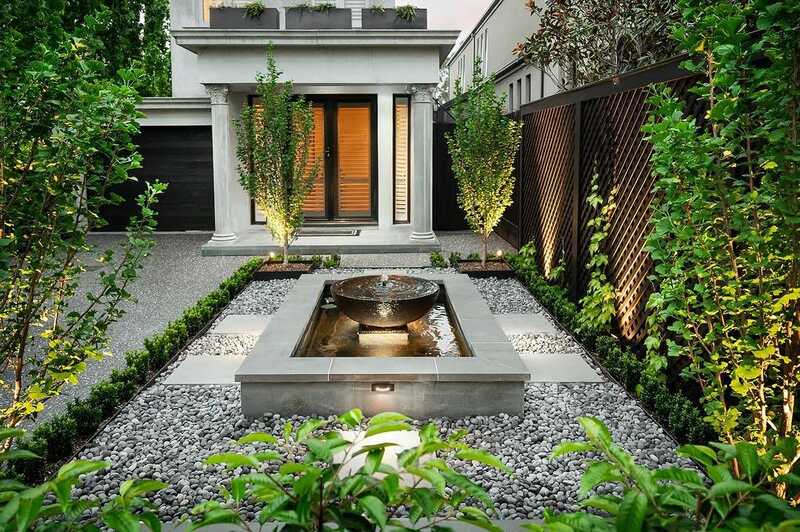
Adding water features like a small fountain, birdbath, or pond near your walkway creates a serene and luxurious entryway. The sound of trickling water offers a calming effect, while the reflective surfaces of fountains or ponds enhance the visual appeal of your outdoor space. Water features work particularly well when integrated with lush greenery or stepping stones.
Water features require regular maintenance, including cleaning and water replenishment. They can also be costly to install, especially if plumbing or electrical work is required.
Tip: Choose compact, self-contained water features for easier maintenance. Incorporate aquatic plants or fish to reduce algae growth and enhance the natural aesthetic.
15. Stepping Stones in Grass
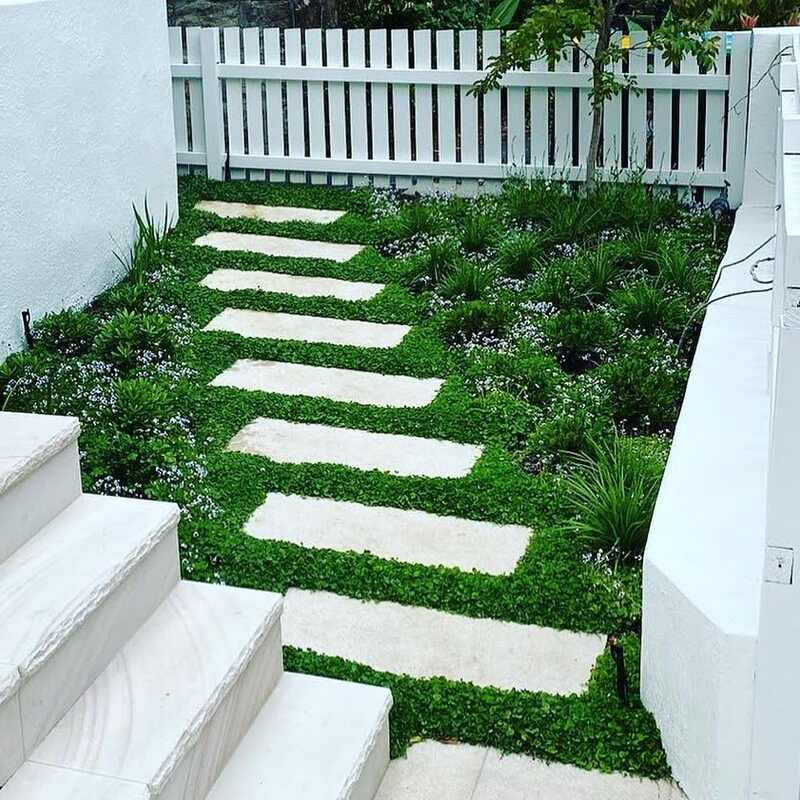
Stepping stones laid into grass create a rustic and charming walkway, ideal for homes with cottage-style or naturalistic gardens. They break up large stretches of lawn, adding texture and visual interest without overwhelming the space. Durable materials like slate or flagstone ensure longevity and withstand foot traffic well.
Grass maintenance can be challenging, as it requires regular mowing and trimming around the stones. Over time, grass may encroach onto the stones, creating uneven edges.
Tip: Space the stones evenly to match a natural stride, ensuring comfort and practicality. For easier maintenance, consider artificial turf or groundcovers like clover instead of traditional grass.
How Do I Make an Outstanding Front Entry Walkway?
Creating an exceptional front entry walkway involves combining practicality with creativity. Here are some tips to make yours stand out:
- Personalize the Design: Incorporate unique elements like mosaics, custom lighting, or personalized stepping stones.
- Blend with the Landscape: Ensure your walkway harmonizes with the surrounding yard, complementing plants, trees, and other features.
- Focus on Maintenance: Choose materials that are easy to care for and withstand your local weather conditions.
- Add Comfort Features: Integrate benches, seating areas, or shaded nooks to make the walkway inviting and functional.
Conclusion
A thoughtfully designed front entry walkway can transform your home’s exterior, boosting its curb appeal and functionality. By selecting the right materials, incorporating creative design elements, and adding personal touches, you can create a walkway that is both practical and visually stunning. Whether you opt for luxurious stone, budget-friendly gravel, or reclaimed materials, your walkway sets the tone for the warm welcome awaiting beyond the door.

